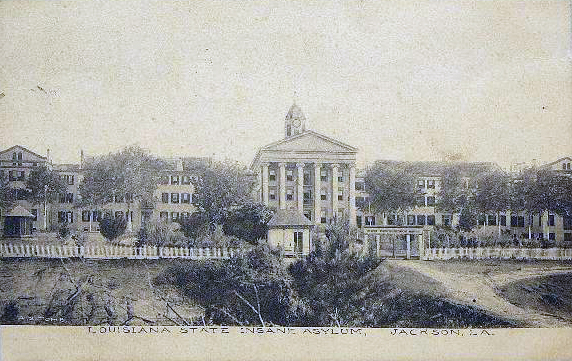The internal assessment for "Part 4: Options" is a presentation that you complete in response to one or more of your Part 4 works. Unlike the individual oral commentary, the presentation is based on a topic that you can choose and prepare--this makes the individual oral presentation
slightly less intimidating. This is where you can be creative about a topic that interests you. As Tim Gunn would say, make it work.
What is it?
This assessment is
a prepared oral presentation that lasts between 10 and 15 minutes. The topic and format are up to you. On the day of your presentation, you will present your topic with no interruptions from me or the class, though there may be questions to answer at the end.
What is my topic?
There are a variety of potential areas of focus to address according to the official subject guide:
- Cultural setting of the work(s) and related issues
- Thematic focus
- Characterization
- Techniques and style
- Author's attitude to particular elements of the work such as character(s) or subject matter
- Interpretation of particular elements from different perspectives
Your idea may come from one of these, or a combination of them. However, please keep in mind that your topic should be defined and specific. You will be demonstrating a detailed understanding of the work, and there is an emphasis on independent thinking.
So what should I do?
Well, what do you want to do? A formal analysis or critique of a particular idea or theme, or a more informal approach involving artistry and interpretation? These approaches are some of the ones deemed appropriate by IB:
- An explanation of a particular aspect of an author's work
- The examination of a particular interpretation of the work
- The setting of a particular writer's work against another body of material, such as social or economic background, or political views
- A commentary on the use of a particular image, idea or symbol in a text or in an author's work
- A commentary on an extract from a work studied in class, which has been prepared at home
- The presentation of two opposing readings of a work
- A monologue or dialogue by a character at an important part of the work
- An author's reaction to a particular interpretation of elements of their work in a given context (e.g., a critical defense of the work against a charge of subversion, or immorality, before a censorship board)
***Remember: this is your exploration of a topic. Play to your strengths, but be open to getting into things you haven't done before. If you're good at performance or drama, great! If you're not so good at the performance thing, no problem! Ultimately, this is
literary course; marks will be awarded to you based on the extent to which you demonstrate knowledge and understanding of the texts we studied and your ability to offer an interpretation of them.***
How do I bring film into this thing?
Some interesting presentation ideas follow:
- The relationship between types of camera shots and narrative points of view
- The cinematic representation of inner monologue
- Adaptations of novels/short stories/plays and what they left out
- Narrative voice in film
- 'Updating' a narrative to a contemporary setting and how it affects the thematic message of the text
- Cinema's effect on the structure of the written text
- Symbolism in written and visual text
- How soundtracks and sound effects in a film adaptation change the written text
When is this due?
Ultimately, that is also up to you. We have three texts and three six-week grading periods.
Heart of Darkness and
A Streetcar Named Desire are sooner than
Do Androids Dream of Electric Sheep?, but
DADoES? will come at the end of the semester when people are doing IAs and end of year exams like the AP. It may not necessarily be a bad thing to go first.
- January 19, 2018: Novel to be Presented
- January 29, 2017: Presentation Topic Due
- February 12, 2018: HoD Presentations Begin
Internal Assessment Criteria: Individual Oral Presentation (HL)
|
0
|
1-2
|
3-4
|
5-6
|
7-8
|
9-10
|
Knowledge and understanding
· How much knowledge and understanding does the student show of the work(s) used in the presentation?
|
Does not reach minimum standard
|
There is little knowledge or understanding of the content of the work(s) presented.
|
There is some knowledge and superficial understanding of the content of the work(s) presented.
|
There is adequate knowledge and understanding of the content and some of the implications of the work(s) presented.
|
There is very good knowledge and understanding of the content and most of the implications of the work(s) presented.
|
There is excellent knowledge and understanding of the content and the implications of
the work(s) presented.
|
Presentation
· How much attention has been given to making the delivery effective and appropriate to the presentation?
· To what extent are strategies used to interest the audience (for example, audibility, eye contact, gesture, effective use of supporting material)?
|
Does not reach minimum standard
|
Delivery of the presentation is seldom appropriate, with little attempt to interest the audience.
|
Delivery of the presentation is sometimes appropriate, with some attempt to interest the audience.
|
Delivery of the presentation is appropriate, with a clear intention to interest the audience.
|
Delivery of the presentation is effective, with suitable strategies used to interest the audience.
|
Delivery of the presentation is highly effective, with purposeful strategies used to interest the audience.
|
Language
· How clear, varied and accurate is the language?
· How well is the register and style suited to a Socratic Seminar? (“Register” refers, in this context, to the student’s use of elements such as vocabulary, tone, sentence structure and terminology appropriate to the commentary.)?
|
Does not reach minimum standard
|
The language is rarely appropriate, with a very limited attempt to suit register and style to the choice of presentation.
|
The language is sometimes appropriate, with some attempt to suit register and style to the choice of presentation.
|
The language is mostly clear and appropriate, with some attention paid to register and style that is suited to the choice of presentation.
|
The language is clear and appropriate, with register and style consistently suited to the choice of presentation.
|
The language is very clear and entirely appropriate, with register and style consistently effective and suited to the choice of presentation.
|



